Cue theme music..."Meet NVIDIA Jetson!" The latest addition the Jetson family, the NVIDIA® Jetson Nano™ Developer Kit (V3) delivers the performance to run modern AI workloads in a small form factor, power-efficient (consuming as little as 5 Watts), and low cost. Developers, learners, and makers can run AI frameworks and models for applications like image classification, object detection, segmentation, and speech processing. The developer kit can be powered by micro-USB and comes with extensive I/Os, ranging from GPIO to CSI. This makes it simple for developers to connect a diverse set of new sensors to enable a variety of AI applications. This version of the Jetson Nano Developer Kit comes equipped with two MIPI-CSI camera connectors which enables algorithms that perform stereo vision! We at SparkFun see this as more than enough potential to be yelling "Stop this crazy thing" to your friends & family!
Jetson Nano is also supported by NVIDIA JetPack™, which includes a board support package (BSP), Linux OS, NVIDIA CUDA®, cuDNN, and TensorRT™ software libraries for deep learning, computer vision, GPU computing, multimedia processing, and much more. The software is even available using an easy-to-flash SD card image, making it fast and easy to get started.
The same JetPack SDK is used across the entire NVIDIA Jetson family of products and is fully compatible with NVIDIA’s AI platform for training and deploying AI software. This proven software stack reduces complexity and overall effort for developers.
- NVIDIA Jetson Nano Module and Carrier Board (V3)
- Dark ESD Bag
- Quick start guide/support guide
- GPU 128-core Maxwell™ GPU
- CPU Quad-core ARM A57
- Memory 4 GB 64-bit LPDDR4 | 25.6 GB/s
- 10/100/1000BASE-T Ethernet
- Storage microSD (not included)
- Video Encode 4Kp30| 4x 1080p30| 9x 720p30 (H.264/H.265)
- Video Decoder4Kp60| 2x 4Kp30| 8x 1080p30| 18x 720p30| (H.264/H.265)
- Supports Micro-USB 5V 2A
- Supports DC power adapter 5V 4A
- USB 3.0 Type A
- USB 2.0 Micro-B
- HDMI/DisplayPort
- M.2 Key E
- Gigabit Ethernet
- GPIOs, I2C, I2S, SPI, UART
- 2x MIPI-CSI camera connectors (for stereo vision)
- Fan connector
- PoE connector
- Dimensions: 100mm x 80mm x 29mm
NVIDIA Jetson Nano Developer Kit (V3) Product Help and Resources
SparkFun Auto pHAT Hookup Guide
April 16, 2020
The pHAT to get your projects moving. This guide will help you get started using the Auto pHAT.
Core Skill: Programming
If a board needs code or communicates somehow, you're going to need to know how to program or interface with it. The programming skill is all about communication and code.
Skill Level: Experienced - You will require a firm understanding of programming, the programming toolchain, and may have to make decisions on programming software or language. You may need to decipher a proprietary or specialized communication protocol. A logic analyzer might be necessary.
See all skill levels
Core Skill: Electrical Prototyping
If it requires power, you need to know how much, what all the pins do, and how to hook it up. You may need to reference datasheets, schematics, and know the ins and outs of electronics.
Skill Level: Rookie - You may be required to know a bit more about the component, such as orientation, or how to hook it up, in addition to power requirements. You will need to understand polarized components.
See all skill levels
Comments
Looking for answers to technical questions?
We welcome your comments and suggestions below. However, if you are looking for solutions to technical questions please see our Technical Assistance page.
Customer Reviews
4 out of 5
Based on 14 ratings:
1 of 1 found this helpful:
Huge upgrade from RPi for robotics
Perfect for my robot using stereo vision and object recognition. Looking forward to more community development in the future. Even got the FLiR Lepton working over GPIO with basically no changes from the RPi setup, fast and easy!
1 of 1 found this helpful:
Fun little computer
Quick and easy to set up.
1 of 1 found this helpful:
Nano Nano!
This is a great development board with lots of power for advanced AI and robotics. There is also lots of getting started materials and projects and if you are a Pi fanatic, this is easy as Pi.
1 of 2 found this helpful:
Powerful - out of the box
Actually, the little computer is 'on its box', a curious way to keep one from shorting out the naked circuit board I am guessing. With a usb camera the Jetson Nano was quickly doing its best to label the scenes that I pointed the camera toward. This is done by feeding the images from the camera to a pre-computed neural network. Now, on to my project: Using machine learning to detect interesting signals in gigabytes of recorded underwater noise.
3 of 7 found this helpful:
Worst dev board I've ever owned
I have wasted days, weeks trying to make the Jetson Nano usable. I have followed all recommended procedures on the nVidia website, bought its special memory card and power supply, fan and ethernet cable (because it has no wifi) but still.... it constantly freezes, crashes.. and ZERO support from a company who reported $3.08 billion income for the first quarter of 2020. I'm sure the hardware is as nice as they say, but the one-and-only operating system available for it is absolute garbage. It's not even capable of being a media center (if it could stay crash-free long enough to compile some).
HIGHLY DISAPPOINTED!
3 of 8 found this helpful:
Not worth the money or effort especially for a beginner
It is still ways away from being a developed solution. Too many bugs on the stock firmware. Remote desktop doesnt work. Supplied examples dont compile. Ubuntu crashes.
1 of 5 found this helpful:
Worst Customer Service
Honestly, I have never dealt with a company that has botched up a bill more times than this company. AND now they won't even return out calls or emails to get it figured out. Very VERY VERY disappointed with the service.
Wonderful for learning Deep Learning!
This is my second Jetson Nano. The other one is a vA01 and this new one is a B02 (I think). These are great boards for learning and experimenting! I want to get a few more of these, plus the much more capable Jetson AGX Xavier.
So far it has been working great!
I installed it in the Geekworm N100 Metal Case with the Noctua 40mm fan. I did a lot of searching for a 22.5mm long screw to attach the fan even going so far as to get a 25mm long screw and shorten it using a Dremel. If you do get that case, it actually comes with 22.5mm long screws!
twin csi camera connectors, stereo vision
love that it has two camera connectors out of the box. works great, lots of fun to experiment with! just downloaded latest image from nvidia and "dd"'d to a micro sd card, voila, AI / ML workstation!
0 of 1 found this helpful:
GOOD!
GOOD!GOOD!GOOD!GOOD!
Great computer!
The Jetson Nano will be perfect for my M.Sc. thesis project. Quite easy to setup, even if you don't really have that much experience with Ubuntu. So far it's been great for learning Deep Learning and Computer Vision.
Great Development Kit
I currently have 4 Jetson Nano for various projects from robot arm control to object and face recognition exploration. Great learning tool. With Python and its many libraries, you can develop some amazing AI projects.

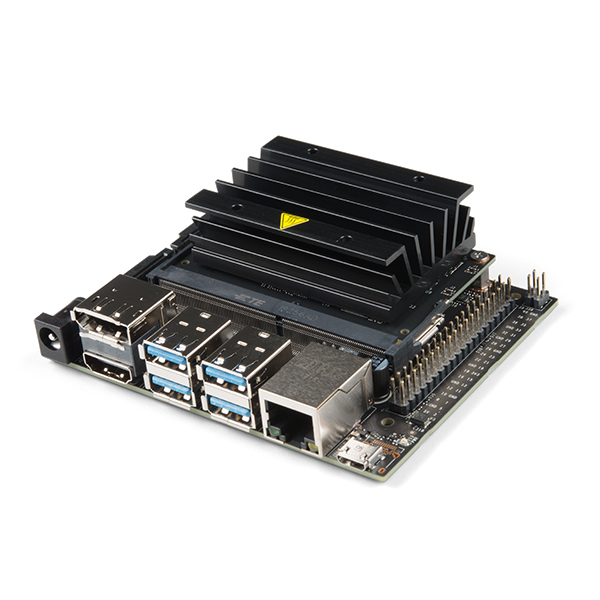
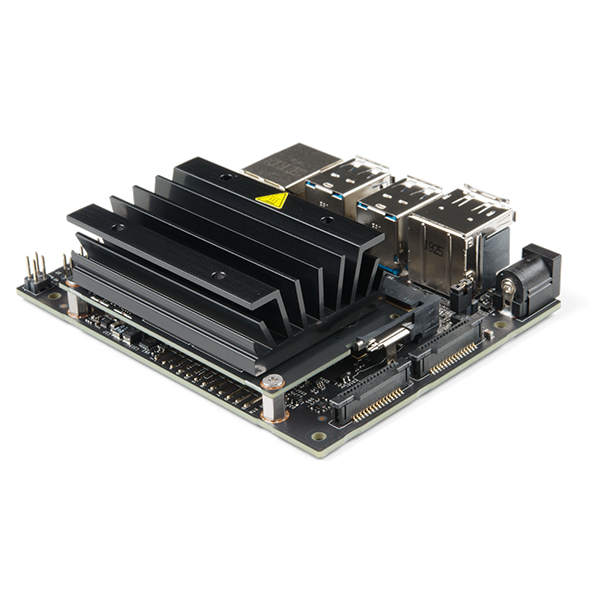
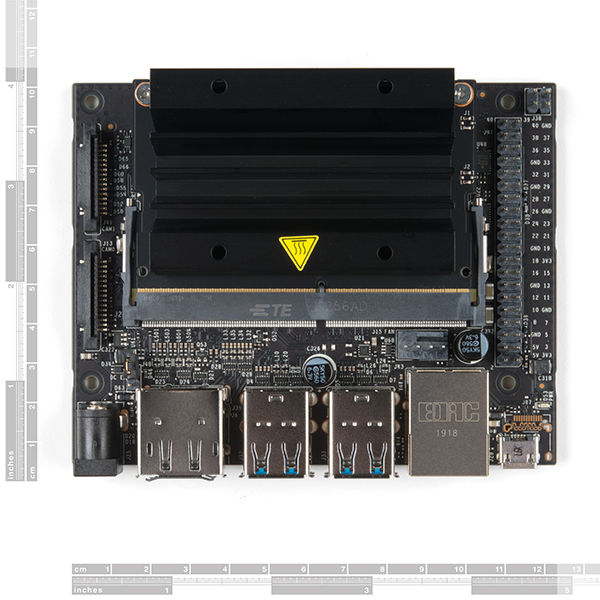
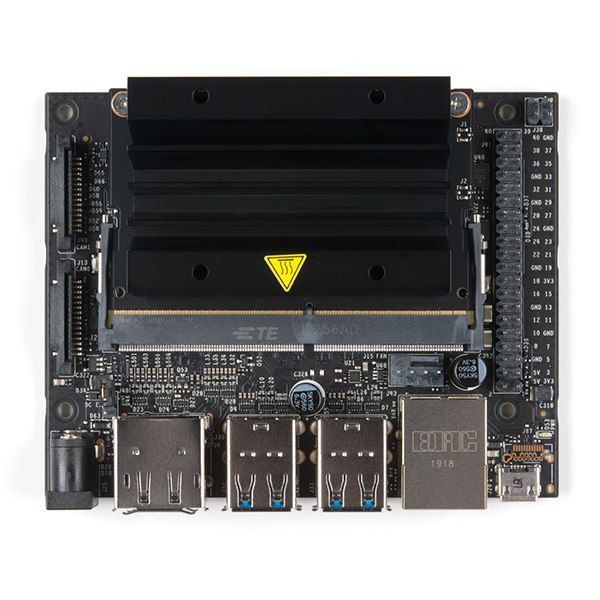
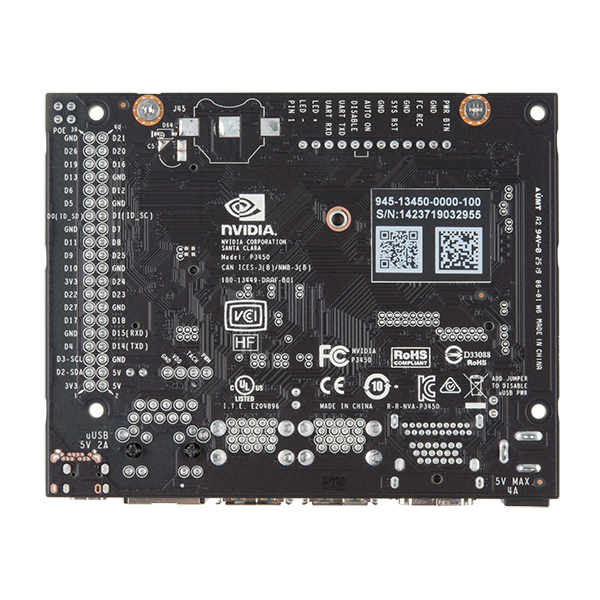
hello!! The V3 is the newest version of Jetson Nano nowadays?
Yes, you are correct!
This page needs some details as to the difference between V2 and V3. As Crusty points out, this doesn't appear to be the newly released Xavier NX module which comes with:
384-core NVIDIA Volta @ 1100MHz with 48 Tensor Cores
Unfortunately, I wasn't quite sure what @CrustyCarbuncle was trying to point out. That being said, there wasn't version 2 (V2) of the carrier board; however, I believe that we do highlight the primary change to the carrier board:
To clarify for all customers, the Xavier module does not come with this kit. The product name specifies the Jetson Nano specifically and as specified under the Includes tab, only the carrier board is the third revision:
I gather that though these boards support the Nano 'production' and the new Xavier modules, they are being supplied with the earlier, non-'production' Nano modules. The main (only?) difference is the presence of the 16 Gb eMMC modules on the production modules.
Is this correct?
The carrier board is supposed to be forward compatible with the unreleased Xavier module and as specified under the Includes tab, the Jetson Nano module is included in this kit: "NVIDIA Jetson Nano Module and Carrier Board (V3)".
Unfortunately, I'm not sure how to interpret the rest of your comment. Could you rephrase for me?